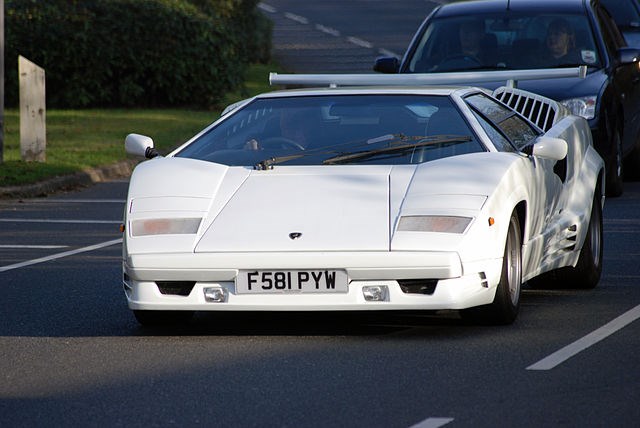Like many a gearhead, I’m not above jumping on Google on a Saturday morning and browsing the car ads for something with the word “collectible” in the description.
Not only is there always the chance that you’ll stumble across that barn-find machine that’s worth a bundle, but it’s amusing to note that people have a really optimistic idea about what kinds of cars should be collected. Things get even better when they have a pretty optimistic take on how to even spell “collectible.”
However, if you’re like me, you’ve noticed a trend in the classic and collector car market lately. The gems are mostly gone, and in their place is a sea of overpriced drek. Probably the best place to see this is the air-cooled 911 market, which has gone completely nuts; where once a nice 911SC might have been a car that fetched less than $20,000 or so, prices have practically doubled. By the time I’ve written this sentence, “practically” might need to get crossed out there.
911s are the worst offenders, but everything’s on the rise. Ferraris have always been pricey, but in one fell swoop the 328GTS jumped from an $80,000 car to a quarter-million-dollar car. The Countach, always better to look at than actually drive, has done the same thing, though the ceiling is closer to half-a-million.
It’s not just the exotics either. Finally, 240Z values are starting to increase. The BMW 2002tii is worth silly amounts of money all of a sudden, and the original M3 is a blue-chip collectible instead of a weekend warrior.
As a result, some of these quite valuable cars find themselves in the hands of owners who are delighted at the investment, but maybe a bit bemused as to what to do about it. Some time ago I was speaking with the owner of an early Porsche 930 Turbo, who told me he was planning on selling his car.
“It’s just worth too much to drive,” he said.
Now there’s a worry. On one hand, how do we deal with the fact that our dream classic cars might be out of reach. On the other hand, what if you’ve already got your classic and can’t risk driving it?
In British Columbia, things are perhaps tempered by the equal insanity of the real estate market. With property taxes and prices on the rise, as well as the most expensive fuel in the country, classic owners probably spend more time looking at their cars than driving them anyway (there are exceptions, of course). And, when your house has increased by a half-million dollars in the course of six months, maybe the fact your ratty 911 is now worth its weight in gold just makes sense.
But things are about to get a lot worse. Look south, and you’ll see the prices of all kinds of classic machines ballooning, just as they did during the muscle car bubble. The difference here is that the current market may not be a bubble, and may in fact be an allergic reaction to the overcomplicated cars manufacturers keep making. Enthusiasts want simple, and simple is hard to find outside of a classic these days.
And, where the United States goes, so goes Canada except much faster. Our weak petro-dollar is good for exports and tourism, but forget trying to import a clean Arizona-based project car across the border. Suddenly, you’ve got a third less buying power at the auctions and are facing a market where even the basket cases are getting chased by big money.
We’re going to see the same thing in the used market: while Corollas and Civics will continue along at their normal pricing, unique machines like low-production sports cars will start flowing south again. Wholesalers in the United States can afford to pay Canadian dealers near-retail figures thanks to the disparity between the currency, so a lot of those American-spec machines that came north during the days of dollar parity are probably on their way down again. And forget trying to save a few thousand by buying and importing a used U.S. vehicle – the savings have mostly dried up.
However, it’s not all doom and gloom. For one thing, the Canadian new car market isn’t all that bad. If the classic Porsche seems wildly out of reach, then just go look at the value represented by a low-mileage previous-generation 911; first owners of premium sportscars still manage to spend a great deal of time not driving them.
Also, the Japanese classic market is still far softer than it should be, with cars like the Nissan 300ZX and third-gen Mazda RX-7 climbing, but not out of reach. These are machines with much the same racing heritage and backstory as some of the fancier-pants European stuff, and they drive great.
Lastly, the classic car market isn’t always about dollars and cents. Even in today’s digital age, word of mouth still counts for something, and frequently owners want to see their pride and joy go to a good home. If you’re out there at the car shows, shaking hands and networking, it’s still possible to find something special to make your own. And, if you’re worried about driving your own classic, now made valuable by the rising tide that floats all ships, just get up a little earlier before the traffic’s out, and find a lonely road. It’s the best way to enjoy it anyway.
Brendan McAleer is a freelance writer and automotive enthusiast. If you have a suggestion for a column, or would be interested in having your car club featured, please contact him at [email protected]. Follow Brendan on Twitter: @brendan_mcaleer.



